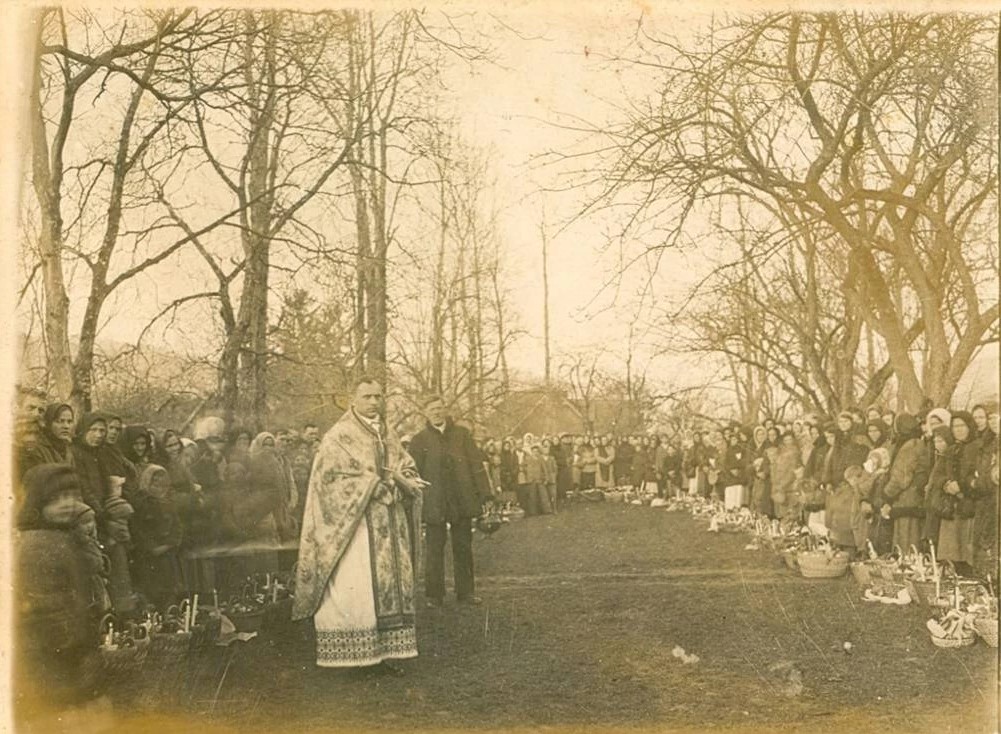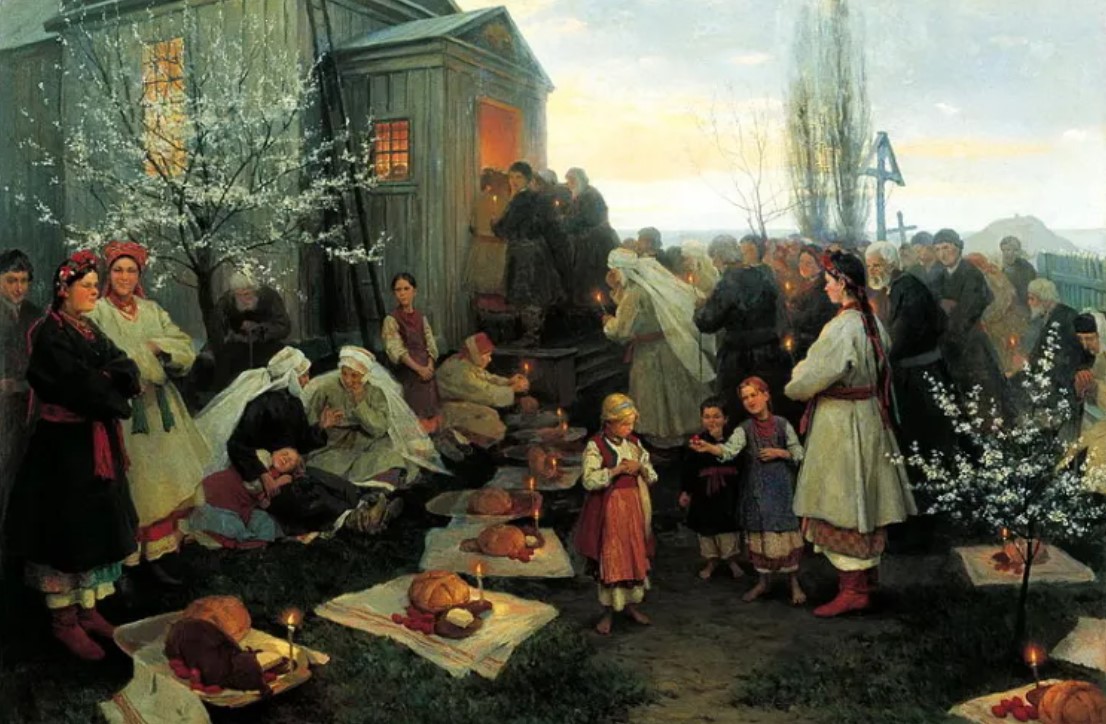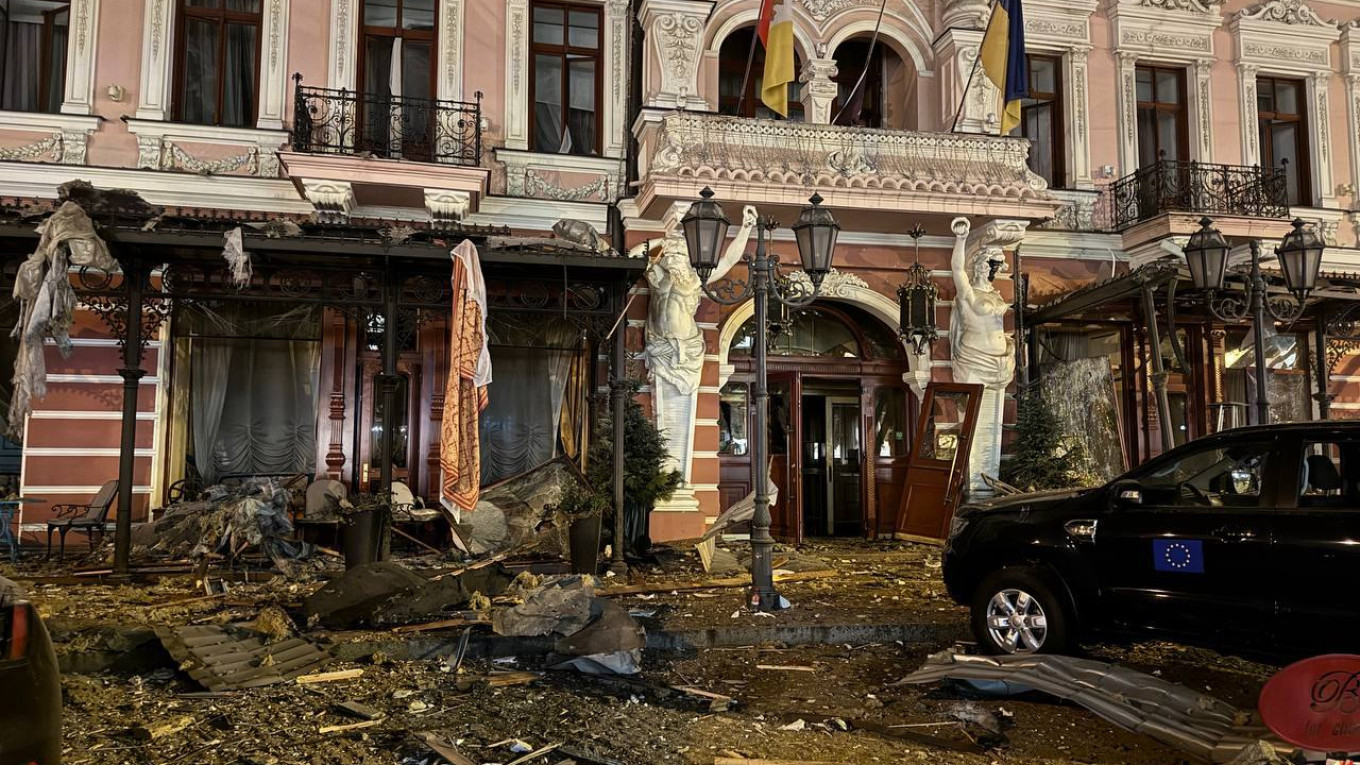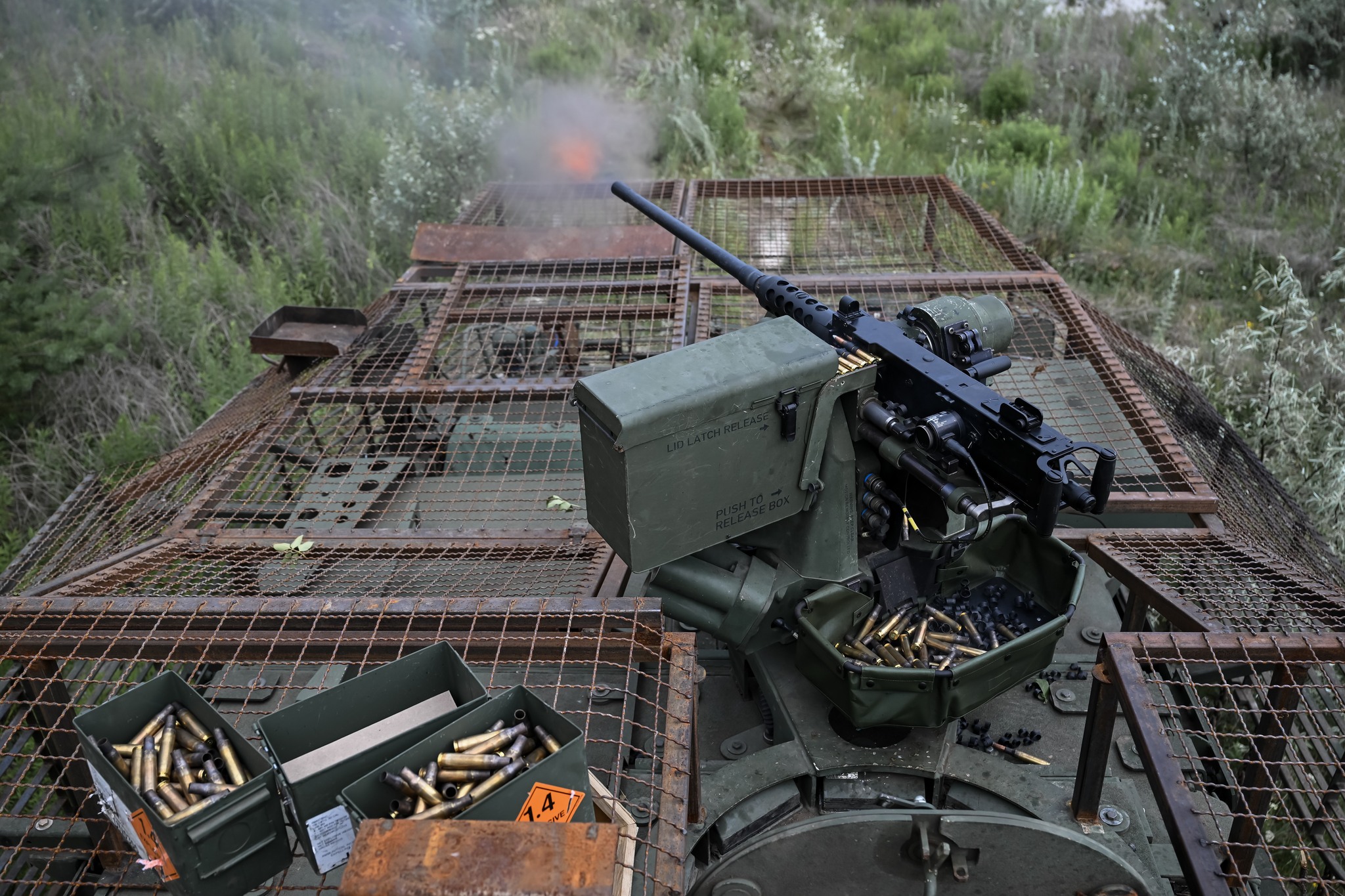Main image: Mykola Pymonenko’s Easter Morning paintings
Easter holds a special place in the hearts of Ukrainians as one of the most cherished family celebrations. Some look forward to baking traditional paska (Easter bread), others enjoy decorating pysanky (painted eggs), while some eagerly anticipate the moment to visit relatives in the countryside, celebrate, and hear fascinating stories from their grandmothers. After all, grandmothers know everything about the true Easter traditions and take pride in sharing them.
Clean Thursday
The last week before Easter is known as Holy Week. During this week, devout Christians observe a strict fast and go to confession. One of the key days of this week is Clean Thursday. Even before dawn, our ancestors would begin their housework: cleaning the pantries, washing clothes, tidying up the house and garden. Everything had to be neat and festive in time for Easter.
On this day, families would bake paska. They made a dough starter with milk, flour, eggs, sugar, yeast, and kneaded the dough. To add fragrance, they would include saffron infusion. The dough was placed in tall forms, decorated with dough braids, wheat ears, and larks. The forms were then left in a warm place to rise, and later placed in a preheated oven. If the top of the paska sank or it was hollow inside, it was considered an omen of misfortune. Until the paska was blessed in church, it was forbidden to eat it, as it was considered a sin to even take a small bite.
In the evening, the church would hold the Passion Service. In the past, villages and towns would maintain a solemn atmosphere, with no laughter, singing, or loud conversations during the reading of the Gospels in church. When returning from the service, the faithful would try to bring the "Passion Candle" home without it going out, believing it had special powers to protect the household from harm. To preserve the flame, people would make lanterns out of painted glass or colored paper. It was a beautiful, magical sight as colored lights spread from the church throughout the village.
Good Friday
On Good Friday, the faithful refrain from eating until the Plashchanitsa (the burial cloth of Christ) is taken from the altar to the center of the church. In the Halychyna region, no bells would ring on Good Friday; instead, the bell-ringer would strike wooden mallets to announce the service. At the moment when the Plashchanitsa was taken out, children would also strike small handheld rattles. After the service, the family would sit down to a Lenten meal consisting of vegetables like potatoes, cabbage, and cucumbers.

Easter Saturday
On Easter Saturday, families would make krashanky (dyed eggs), decorate pysanky, or, as they say in the Carpathians, "slyvchaty slyvky" (decorate the eggs). Traditionally, eggs were dyed using onion skins, but wealthier families would buy special dyes in red, yellow, blue, green, and gold. Our ancestors believed that a blessed egg contained "forty acts of charity" and that the "Holy Spirit" resided within it. The shells of the blessed eggs were kept for later use, particularly for purging people and livestock of fevers.
These Easter traditions not only connect Ukrainians with their faith and ancestors, but they also carry rich cultural symbolism and are an essential part of family life during this festive season.
In the evening, the housewives would prepare the Easter basket, placing the most beautiful paska, eggs, butter, smoked meat, horseradish, and salt inside. If the family was large, all the food was placed in a cloth to carry to church for blessing. On the night before Easter, the young men had a custom of lighting a big fire. The bonfire was made on a hill outside the village or near the church, so that it could be seen by the whole village, or even better — by neighboring villages.

EASTER
As soon as the bells rang, people from all parts of the village or town would start moving towards the church — some on foot, others in carts. Children were also taken along, and almost no one stayed home. Those who couldn't find a place inside the church would stop outside and listen to the service. Everyone was waiting for the moment when the priest would sprinkle their Easter baskets with holy water and say:
— Christ is Risen!
And the people would respond:
— Truly He is Risen!
In the western regions of Ukraine, when they returned home, the hosts would not enter the house right away. They would walk around the yard and sprinkle the holy salt around — "to drive away the evil spirits." Then, the housewife would lay a white cloth on the table and place the blessed paska, eggs, butter, and smoked meat. The whole family would pray to God and sit down for the festive meal. After the delicious feast and a good rest, the girls and small children would go to sing "haivky" or "hahilky" (traditional Easter songs). On Easter, every villager tried to ring the bell at least a few times, as it was believed to bring good luck. Therefore, the bells would ring all day, people would gather near the church, and there was a real sense of celebration.






















